concept
Ty Boomershine
créations dy
Lucinda Childs
Merce Cunningham
Tim Etchells
Martha Graham
Mathilde Monnier
Ginevra Panzetti
& Enrico Ticconi
avec les danseurs du
Dance On Ensemble
Ty Boomershine
Anna Herrmann
Emma Lewis
Gesine Moog
Omagbitse Omagbemi
Miki Orihara
Tim Persent
Jone San Martin
Marco Volta
Lia Witjes-Poole
production
DIEHL+RITTER
durée
à confirmer
langue
no problem
disponibilités
à partir de juillet 2021
équipe en tournée
à confirmer
transport oui
liens & téléchargements
> performance sheet (EN)
> dossier de diffusion (FR)
> context
> full video (password)
> HR photos (password)
> technical rider (password)
Dance On Ensemble prépare un programme autour de l’art de répondre par la danse. Des artistes contemporains – Tim Etchells, Mathilde Monnier, Ginevra Panzetti & Enrico Ticconi – sont invités à réagir, en utilisant leur propre langage artistique, aux créations emblématiques de la modern Dance et de la post-Modern Dance de Martha Graham, Merce Cunningham et Lucinda Childs.
Basé à Berlin, le Dance On Ensemble réunit des danseurs et danseuses expérimentées de plus de quarante ans qui revendiquent une longue carrière dans la danse. Miki Orihara, danseuse de l’Ensemble, a été soliste pendant près de trente ans au sein de la Martha Graham Dance Company. Ty Boomershine, le directeur artistique de l’Ensemble, a travaillé avec Merce Cunningham au début de sa carrière et dansé avec Lucinda Childs pendant plus de vingt ans, en plus de diriger ses répétitions et d’être son assistant artistique. Ces liens ont fait naître l’idée de remettre en scène des chorégraphies de Martha Graham, Merce Cunningham et Lucinda Childs pour les inclure au répertoire du Dance On Ensemble. Après tout, le travail de ces chorégraphes est étroitement lié aux corps de leurs danseuses et danseurs.
À l’époque, ces créations avaient un point commun : elles brisaient les règles de la danse. Elles sont encore qualifiées de radicales aujourd’hui, mais qu’implique leur radicalité ? Si l’on s’en tient à l’étymologie du mot « radical», qui vient de « racines », sous quelle forme ces chorégraphies ont-elles contribué aux racines de la danse contemporaine ?
Enthousiasmé par le travail de Tim Etchells, de Mathilde Monnier et du duo Ginevra Panzetti & Enrico Ticconi, Dance On invite ces artistes à réagir à des œuvres classiques avec leur propre langage artistique à l’aide des danseurs expérimentés de l’Ensemble. Les cinq œuvres performatives créent de nombreuses connexions entre l’héritage de la danse et la création en danse contemporaine, ainsi qu’entre des artistes de différentes générations et aux formations diverses. La question de la relation entre l’ancien et le nouveau se verra offrir une réponse différente par chacune des œuvres ainsi produites.
C’est avec une installation que le metteur en scène et artiste Tim Etchells crée un espace pour le solo Deep Song (1937) de Martha Graham, dont la danseuse Miki Orihara en interprète la version originale. La chorégraphe Mathilde Monnier explore la chorégraphie Story (1963) de Merce Cunningham en interrogeant son lien personnel avec son travail et les structures avant-gardistes explorées par cette pièce. Quant au duo de chorégraphes Panzetti & Ticconi, il se laisse guider par le langage du mouvement minimaliste des premiers Works in Silence de Lucinda Childs dans les années 1970 et propose une réflexion sur la forme en tant que véhicule unique et absolu de l’idée.
CALENDRIER "MAKING DANCES - DANCING REPLIES"
Radialsystem V, Berlin (DE)
9 juillet 2021 - Works in Silence (Childs) + Deep Song (Graham) & Everything/Nothing (Etchells) + Marmo (Panzetti & Ticconi)
10 juillet 2021 - Berlin Story (Cunningham) + Deep Song (Graham) & Everything/Nothing (Etchells) + never ending (Story) (Monnier)
Julidans, Amsterdam (NL)
13 juillet 2021 - Deep Song (Graham) & Everything/Nothing (Etchells) + Story (Cunningham) + never ending (Story) (Monnier)
14 juillet 2021 - Deep Song (Graham) & Everything/Nothing (Etchells) + Story (Cunningham) + never ending (Story) (Monnier)
15 juillet 2021 - Deep Song (Graham) & Everything/Nothing (Etchells) + Works in Silence (Childs) + Marmo (Panzetti & Ticconi)
16 juillet 2021 - Deep Song (Graham) & Everything/Nothing (Etchells) + Works in Silence (Childs) + Marmo (Panzetti & Ticconi)
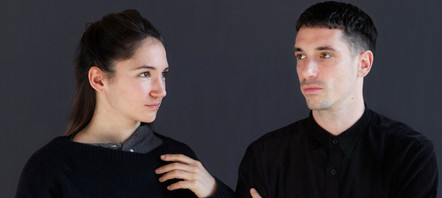
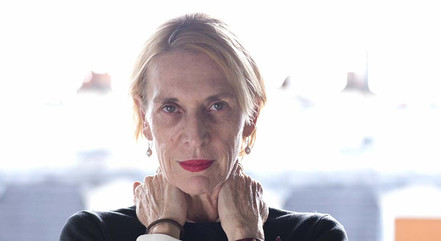

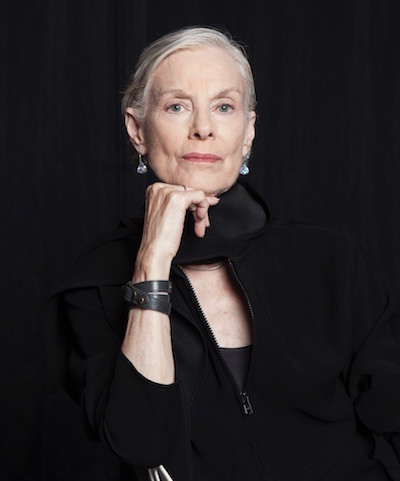
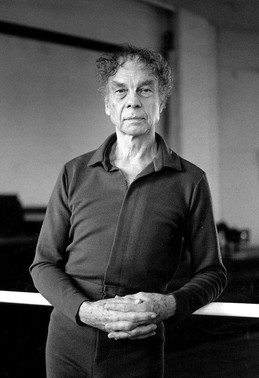
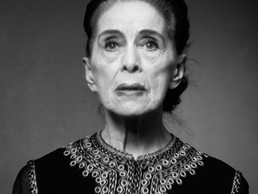
MARTHA GRAHAM - 'DEEP SONG' (1937)
« Deep Song a été créé au début de la guerre d’Espagne. Les formes de la danse – ses tourbillons, ses rampements au sol, ses contractions et ses chutes – sont des équivalents cinétiques de l’expérience humaine de la guerre qui a inspiré Deep Song. C’est une anatomie de l’angoisse suscitée par les tragédies. » Martha Graham
Choreographed and danced by Martha Graham
Music Henry Cowell
Set Martha Graham
Costume Martha Graham
Premiere 19 December 1937, Guild Theatre, New York
Martha Graham developed Deep Song in response to the violent clashes in the Spanish Civil War. The short piece, almost five minutes in length, was premiered at the New York Gild Theater on 19th of December 1937, and brought to Graham a world in which man’s inhumanity to man was eventually destroyed.
The physical action of the dance characterizes human life during war, while the tragedy that Spain experienced during its Civil War is universalized by the choreography. The programs of that time say that Deep Song, in its clear and passionate movements, represented not only Spain, but “the tragedy of the whole world”. The choreographer designed the long bench, the only prop and the dress with its graphic pattern, directly inspired by Picasso’s painting Guernica. Graham danced Deep Song from its premiere to the mid-1940s. In 1989, she resumed the piece with the help of her dancers and photographs by Barbara Morgan. Since then, various dancers of the company, among them Miki Orihara, have danced the piece.
REPLY BY TIM ETCHELLS (2021)
With this installation, theater maker and visual artist Tim Etchells creates a space for Graham’s solo Deep Song (1937), in which the dancer Miki Orihara dances the original version.
Performer Miki Orihara
"The frame of the planned new project – a series of replies by contemporary artists to dance performances from the 20th century – intersects very well with my well-established interest in creating serious and playful dialogue with existing art works, as well as in the act of translating or shifting between artistic forms and media. My pieces Unsound Method (After Conrad), a musical composition and set of publications made in dialogue with Conrad’s Heart of Darkness and Untitled (After Violent Incident), a live performance and single-channel video created as a response to Bruce Nauman’s instal- lation Violent Incident both deal with existing cultural artefacts as a means to create new work and dialogue between past and present.
For the Reply Project I am interested to work with Miki Orihara who, as a key dancer with Martha Graham company, remains a significant point of knowledge and connection regarding Graham’s extraordinary practice. In responding a Graham solo that Orihara dances I am interested to establish a dialogue with her and with Graham’s choreography – creating a work that exists in the tensions contrasts and quite different propositions made by the dance and the distinct gestures and text involved in my installation. Although the details of this collaboration and conversation are still very much to emerge I can say that I am extremely fascinated and gripped by the possibilities that this journey will open up.” Tim Etchells
MERCE CUNNINGHAM - 'STORY' (1963)
Based on the original choreographic work Story by Merce Cunningham 1963. Additional choreographic directions and material developed by the Dance On Ensemble under the direction of Daniel Squire.
Story was choreographed by Merce Cunningham in 1963 with an ever evolving decor created out of objects found in or near the theater by Robert Rauschenberg, and a structured musical score with changing instrumentation by Toshi Ichinayagi. The use of random elements, the lack of a fixed front, and the introduction of an unstable performance space introduced to the general public an experience unlike any that had been faced before. Included was the allowance of real time composition, based on directives the performers could give to each other, and specific freedoms allowed to the dancers, that would create a brand new dance each performance. Although the archival record of “Story” is limited and a traditional reconstruction is not possible. Dance On Ensemble has, instead, undertaken a re-imagination of the piece. Drawing on archival resources, the dancers invented new material to be integrated into the indeterminate structure in order to maintain as many of the intended chance procedures and variable order elements as possible. In agreement with the Cunningham Trust in each venue a local artist is taking on the role of Rauschenberg.
Premiere Berlin Story 23 August 2019, Tanz im August, Volksbühne Berlin
Variable duration 20–35 Minutes.
5 to 7 dancers and 1 to 3 musicians.
Alternating cast Ty Boomershine, Emma Lewis, Gesine Moog, Miki Orihara, Tim Persent, Marco Volta, Jone San Martin, Anna Herrmann Live music Rabih Mroué, Mattef Kuhlmey, Tobias Weber Artist: John Bock (Berlin) Davide Balulah (Paris) Paula Löffler and Maje Mellin (Wolfenbüttel) Stager Daniel Squire
Lighting Patrick Lauckner/Falk Dittrich Sound Mattef Kuhlmey
Costume Sophia Piepenbrock-Saitz
REPLY BY MATHILDE MONNIER (2021)
Mathilde Monnier works with issues surrounding the transmission of repertoire by interrogating through practices, exercises and scenic proposals, the notions of re-appropriations. This work will be an opportunity to go through a contemporary work to better under- stand what is represented in time and how re-imagining can cross (or not) an era.
Title of the piece never ending (Story)
Performed by
“For me, using an existing work as a template to develop a performance is an interesting and exciting prospect. It’s not a format that I normally create for myself, but as I am always looking for new approaches and direc- tions in which to challenge my process’s and broaden my outlook, this concept appeals to me quite deeply. The search for the identity of the dancer in a work is relevant to me and Cunningham’s Story is an inspira- tional spring board for this topic. With its use of chance procedures, internal game structures, and personal choices in terms of the phrasing and movement com- position, it inherently confronts the question of the role of the dancer as medium or as co-creator. While at the same time allowing the work, the dance, the subject itself to have a larger life of its own.
Merce Cunningham’s work has always been import- ant to me and the chance to work with such a rare and rarely seen dance as “Story” doubles my interest. The back story of the collaboration between Cunningham, Rauschenberg, and Ichiyanagi for this dance is fas- cinating and the choices available within the structure of the piece are particularly inspiring. The fact that the original cast included Viola Farber in who’s company I danced at the beginning of my career, creates a per- sonal and satisfying link for me. The freedoms allowed in Story which were unusual for Cunningham’s work, most certainly had an affect on the work that Farber created for her own company and has influenced me on some level as well.
The Dance On Ensemble is a beautiful, exciting com- pany and holds an important place in the current dance climate. Bringing attention to dancers who excel in their field, have a multitude of knowledge, and have chosen to continue in a demanding and often uncele- brated discipline resonates strongly with my values.” Mathilde Monnier
LUCINDA CHILDS - 'WORKS IN SILENCE' (1986 - 2020)
This collection of works from the extensive repertory of Lucinda Childs is exciting both because of its rarity and due to its importance in the dance field. In these dances from the 1970’s Lucinda has left behind props, objects, the spoken word, symbolic movement, all hallmarks of the era of the Judson Dance theatre and chosen to focus on the passage of the body through space. To zero in on the essence of movement, which, for Childs, is the act of walking. From walking to running, to changing direction, to skipping, to leaping, illustrating the evolution of movement into dance through the choreographic vision of Lucinda Childs. This is a rare entrance into a crucial period of transfor- mation by one of the most important choreographers. These works express a fragility and a humanity that is a perfect example of the value of experience, and ideally suited to a group of dancers that bring with them their own abundant histories and knowledge. In the act of stripping away all artifice and theatricality, the beauty and truth of wisdom is confronted, shared, and exposed.
Choreography Lucinda Childs
1/ Untitled Trio: Premiere June 1, 1968 /1973; Judson Memorial Church, New York, NY
2/ Congeries on Edges for 20 Obliques: Premiere March 8, 1975; Y.M.C.A. Nyack New York
3/ Katema: Premiere March 12, 1978; Stedelijk Museum, Amsterdam
4/ Radial Courses: Premiere June 23, 1976; Washington Square Methodist Church, New York, NY
5/ Melody Excerpt: Premiere November 3, 1977; Brooklyn Academy of Music, Brooklyn, NY
Dancers Ty Boomershine, Anna Herrmann, Emma Lewis, Gesine Moog, Omagbitse Omagbemi, Lia Witjes-Poole Lighting Martin Beeretz
Sound Mattef Kuhlmey
Costumes Alexandra Sebbag
World Online Premiere: 18-20 December 2020, STUK House for Image, Dance and Sound
Duration: 60 minutes. 6 dancers.
Production Dance On/DIEHL+RITTER
Co-production STUK. House for Dance, Image and
Sound, Leuven (BE) / Münchner Kammerspiele, Munich (DE)
Support Doppelpass Fund of the German Federal Cultural Foundation
REPLY BY GINEVRA PANZETTI & ENRICO TICCONI (2021)
Ginevra Panzetti & Enrico Ticconi let themselves be challenged by the minimalist movement language of Childs in the Works in Silence of the 1970’s to a reflection on form as the absolute and only tool of the idea.
“Looking at the past as an aesthetic order, that works as a model and forms the idea of what is ‘Classical’, is for us an element of poetic inspiration within our ar- tistic research. Sometimes models must be destroyed, sometimes they must be reiterated until we discover their infinite variants and this produces the rhythm of regeneration between old and new. A rhythm that is also at the base of our Western culture.
The work of Lucinda Childs inspires us a lot because it embodies both a renaissance and also a modern revival of the concept of order in conceiving movement in space. This concept suggests us a path towards the essential.
Its radical nature, particularly in the Works in Silence of the early 1970’s, is to be found in the minimization of the compositional elements of choreography. And that gives a whole new importance to the form as the absolute and only vehicle of the idea.
Far from wishing to interpret that radicality as a refuge in a neutral, impartial or impersonal space, we would like to enhance the aspect that representation of synchrony, harmony and repetition of the body movement in space expresses in terms of power and strength. As appears from parades or military marches. After all, the value of absolute and radical can easily bring with it its counterpart of violence, a theme that we constantly face in our research.
In response to the work of Lucinda Childs and inherently to our artistic research, a graphic and drawing study will simultaneously support and nourish the choreographic ideation.” Ginevra Panzetti & Enrico Ticconi




